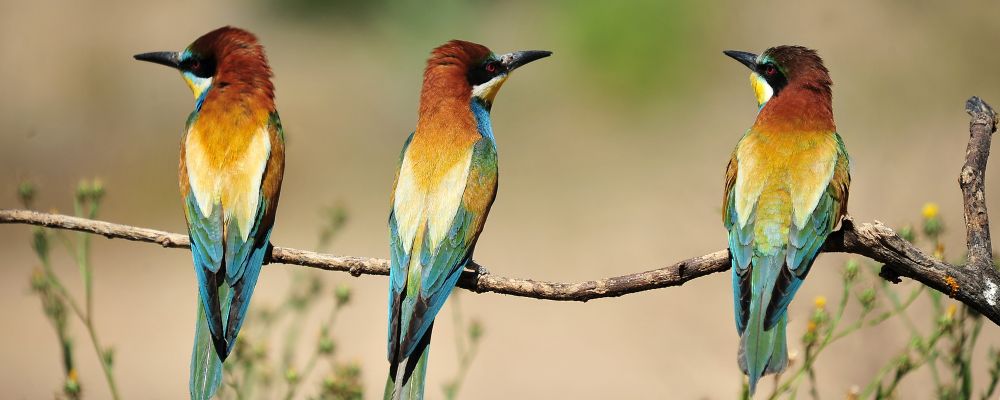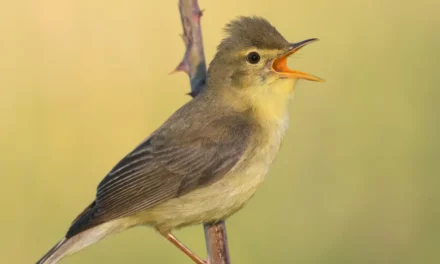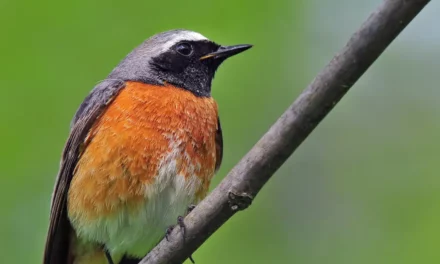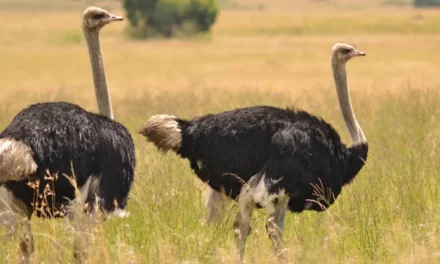What does the European Bee-eater look like?
The European Bee-eater is about the size of a blackbird and is easily recognized by its strikingly colorful plumage.
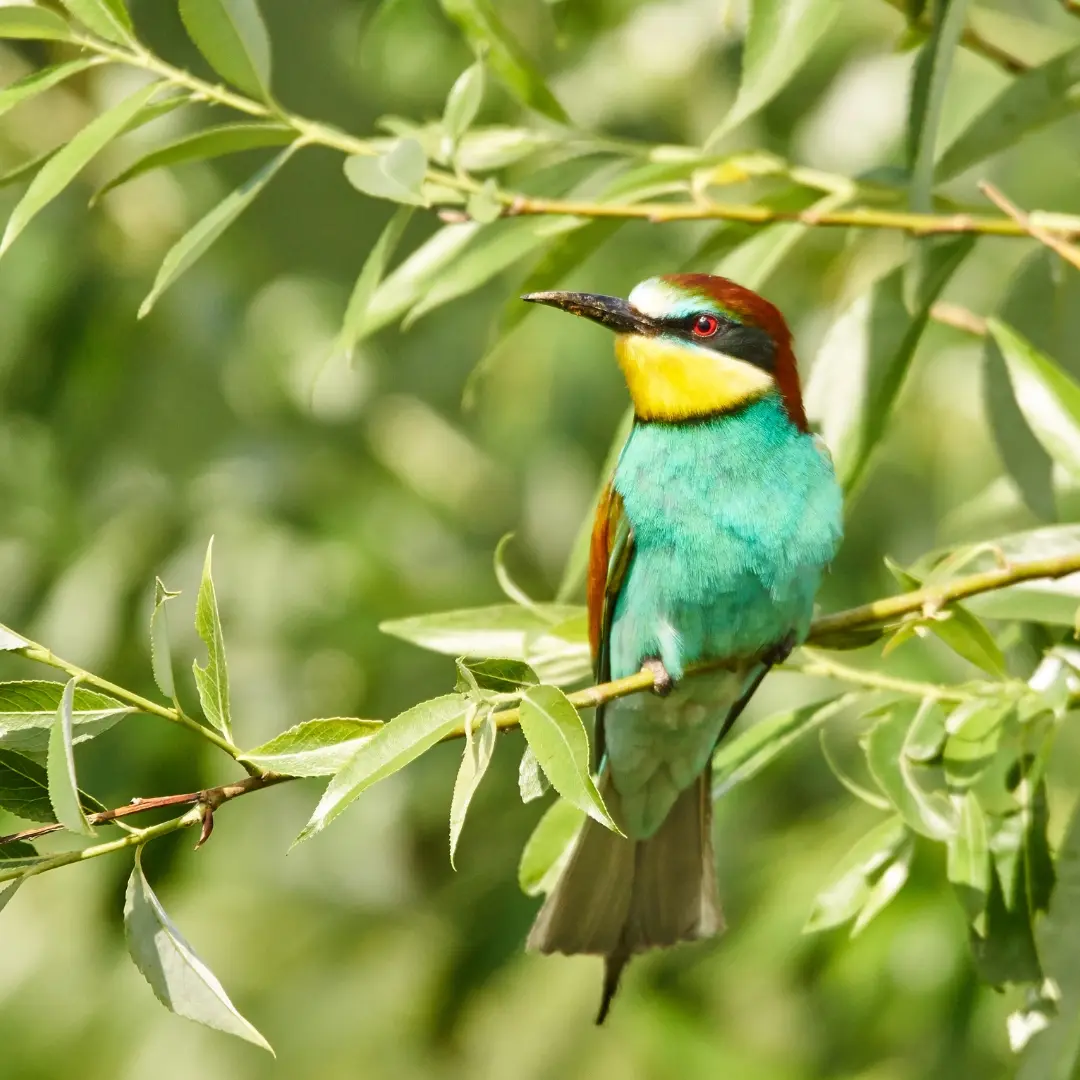
This bird features a brown cap, a yellow throat, a black collar, and a black eye stripe.
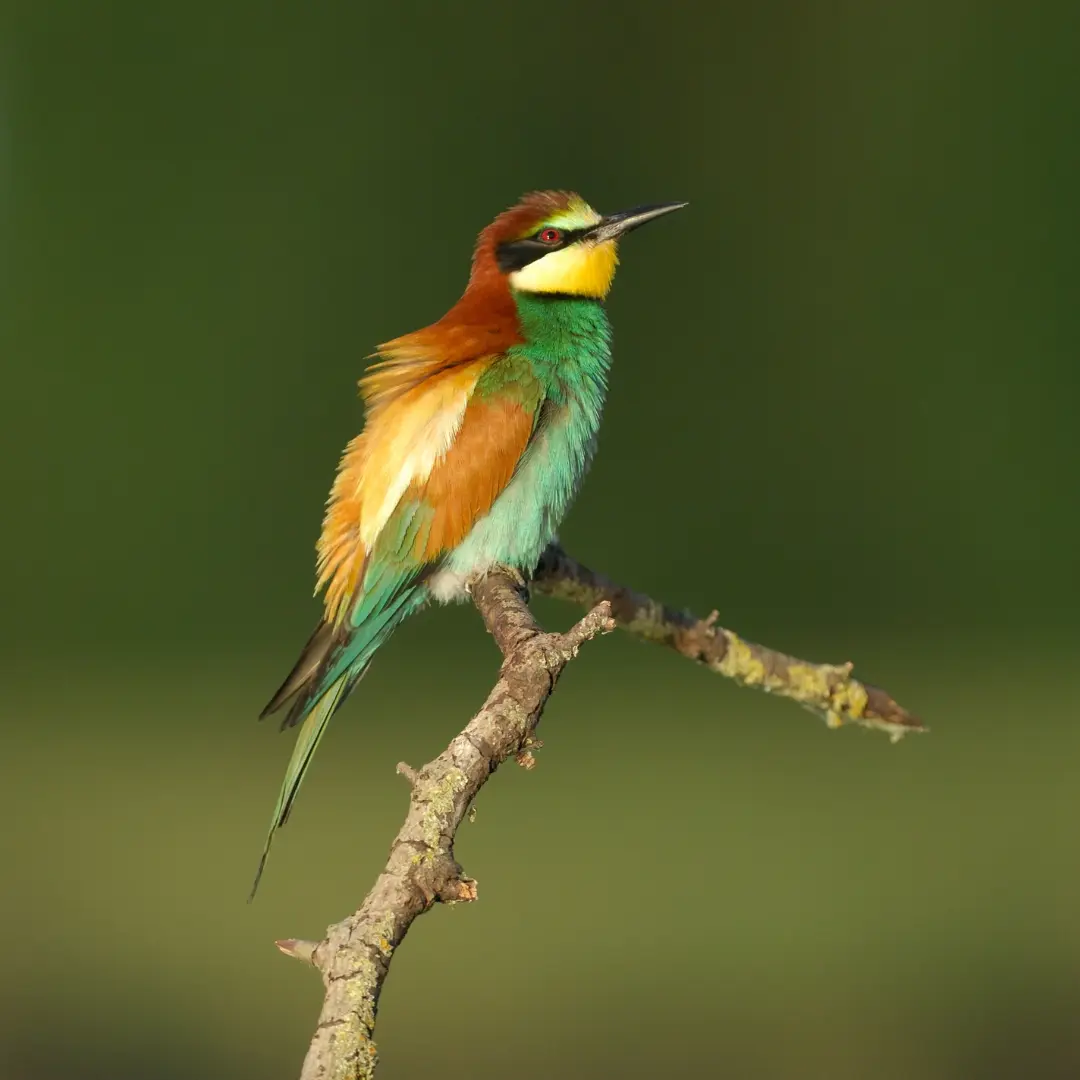
The back’s plumage transitions from rufous-brown to straw yellow, while the belly showcases blue-green to turquoise tones. Its tail is dark green with elongated central feathers.
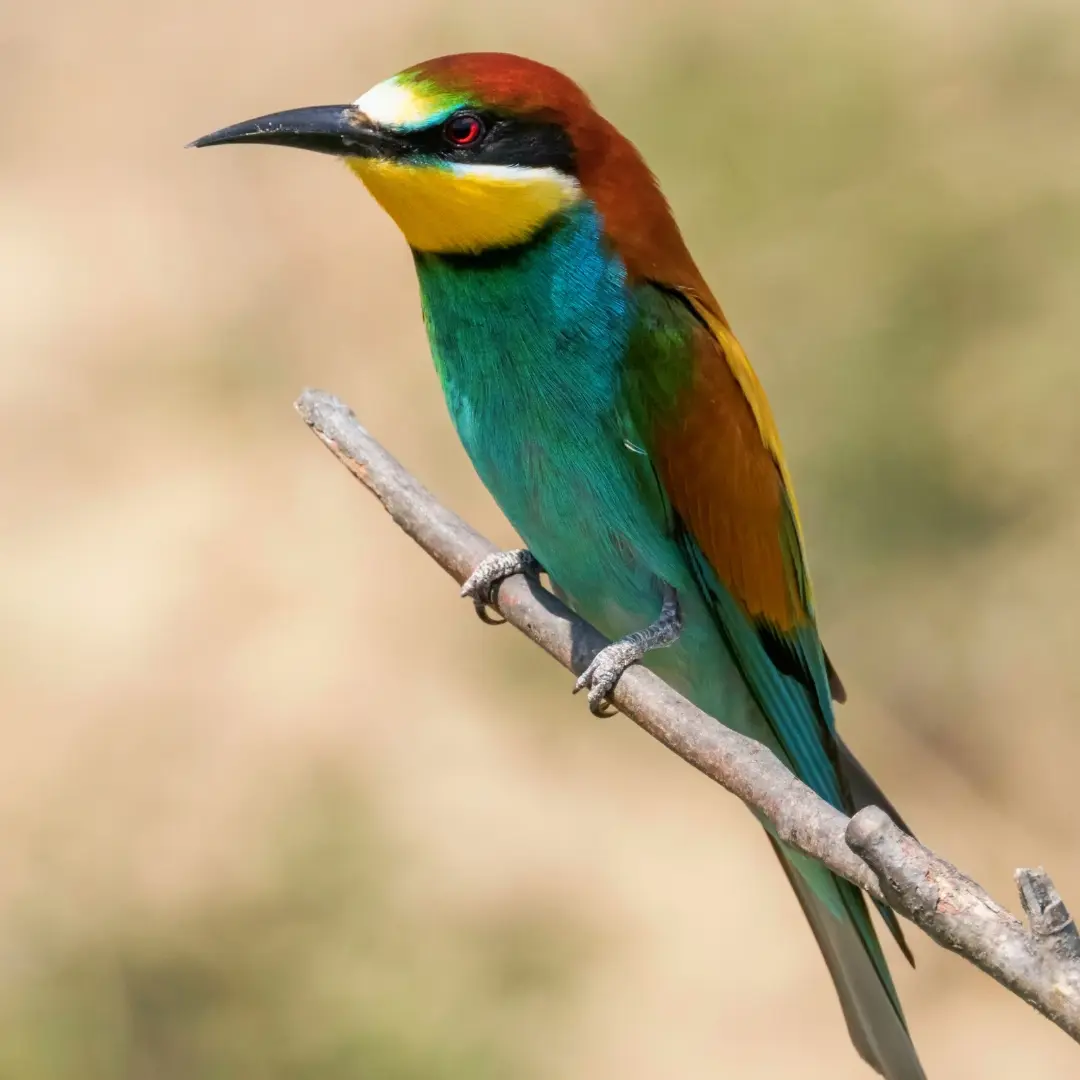
Juveniles display less rufous-brown coloration, replaced by a subtle pale green.
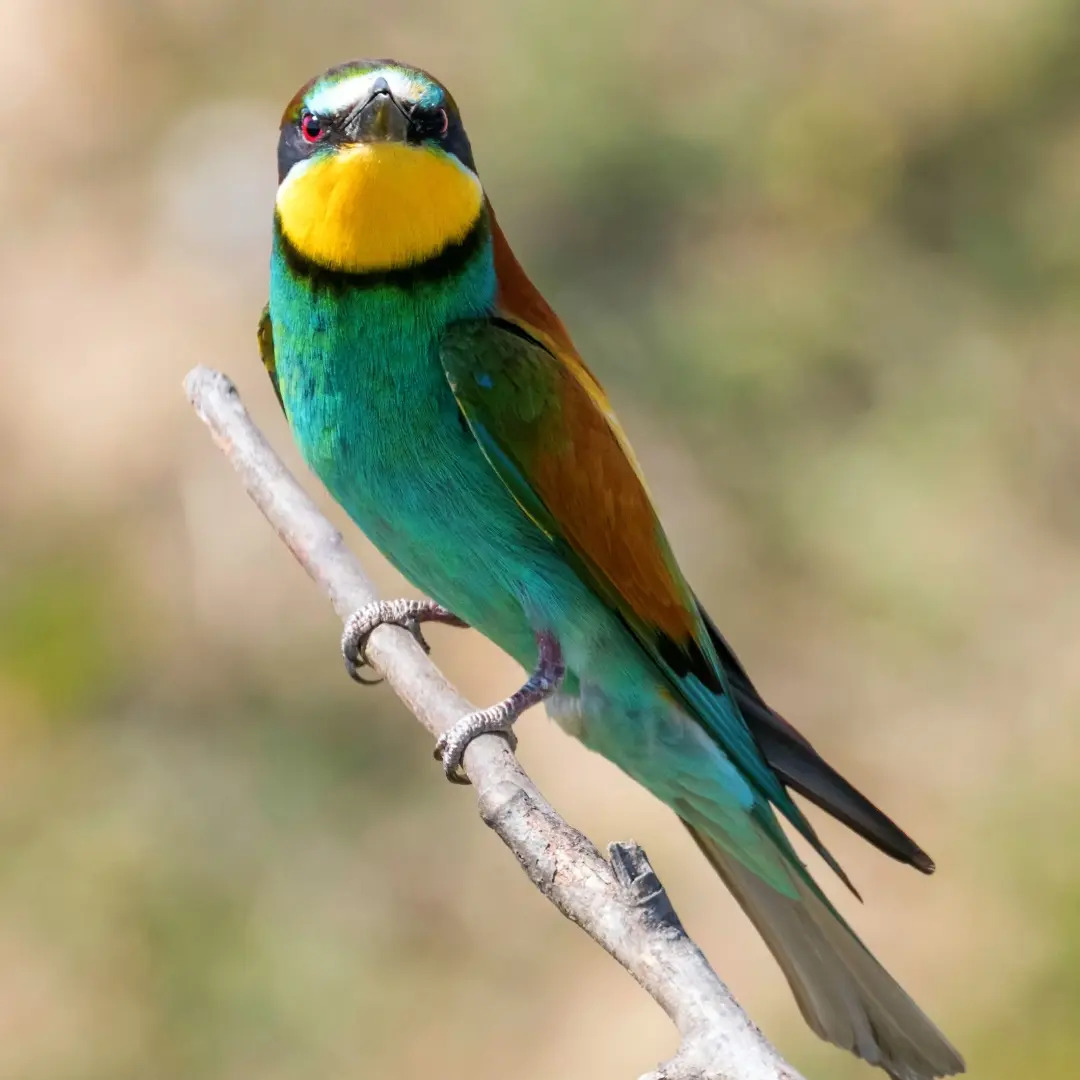
Behavior and flight of the European Bee-eater
This bird is often seen perched on branches or in flight hunting for insects. Its acrobatic flight is similar to a swallow’s but with soaring movements and occasional rapid wing beats.
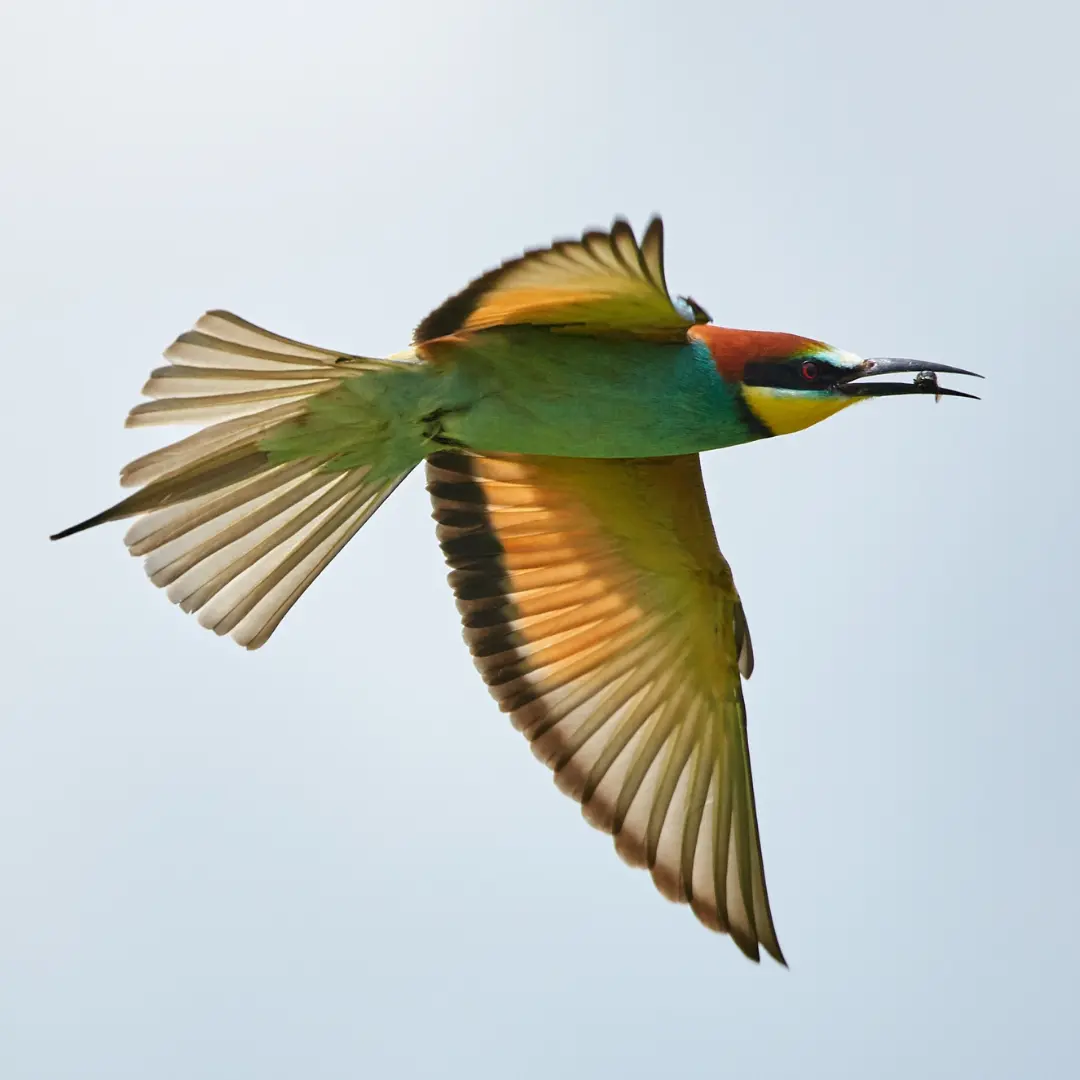
At night, the European Bee-eater gathers in large trees, showcasing its sociable nature by living in colonies.
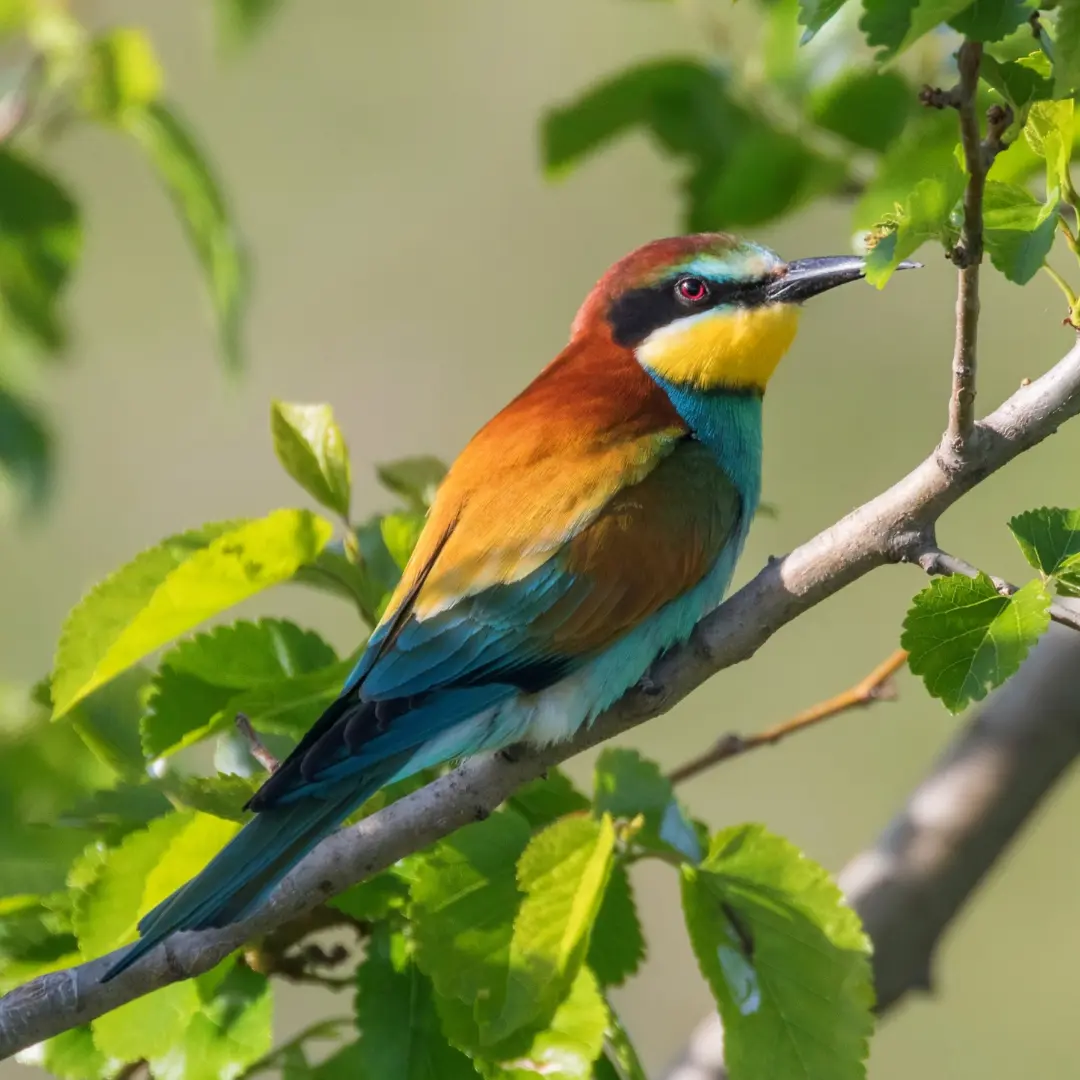
Unique songs and calls
The European Bee-eater is known for its distinctive contact calls, soft yet energetic “prrut” sounds that can often be heard while it is in flight.
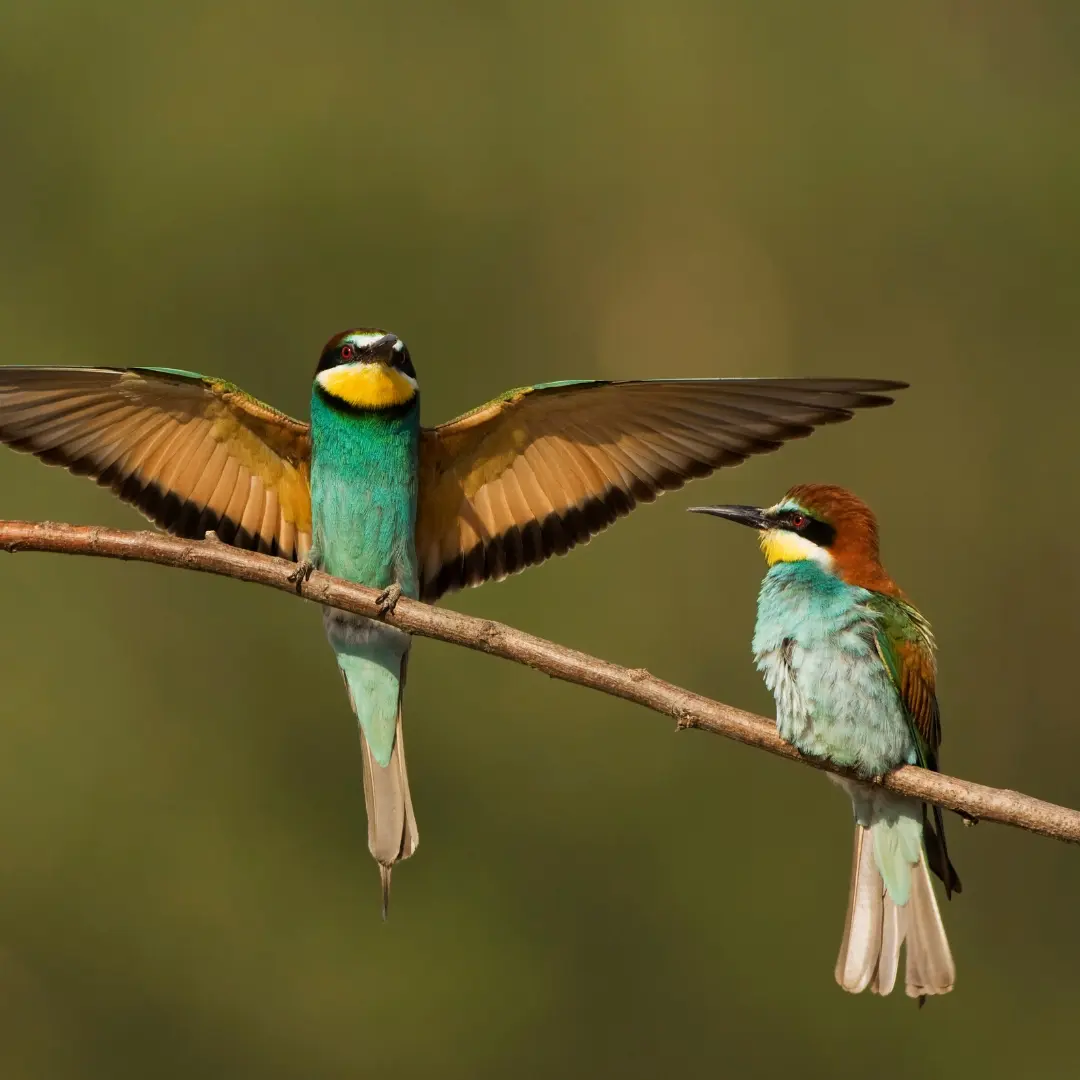
When disturbed near its nest, it emits a sharp “vut,” signaling potential threats.
Reproductive behavior of the European Bee-eater
Breeding begins in May and lasts until August. The bird lays 4 to 8 white eggs per year in a burrow dug into sandy riverbanks or cliffs.
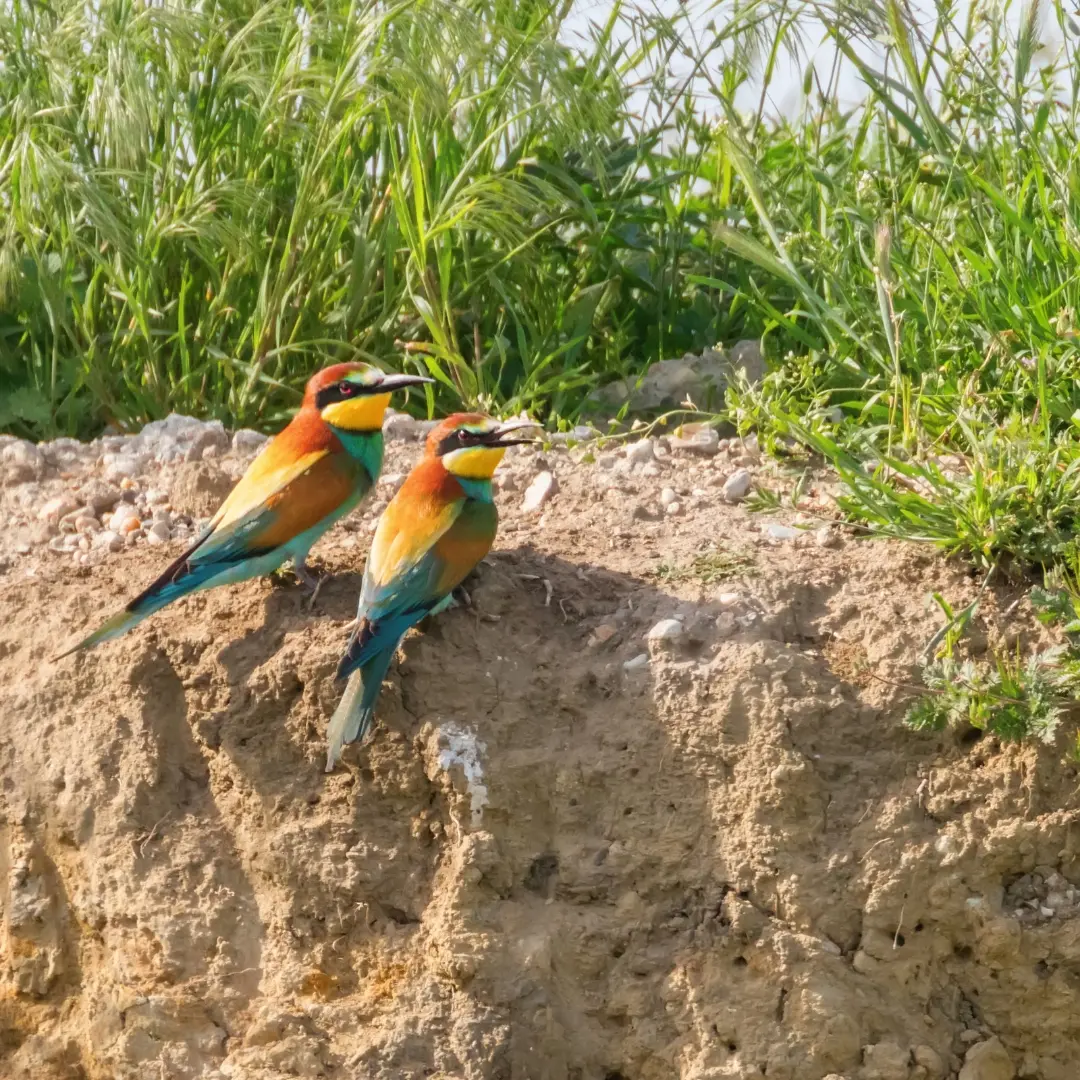
To court the female, the male offers her captured prey, showcasing his skills as a provider.
Diet of the European Bee-eater
As its name suggests, this bird feeds on wasps, bees, and hornets, alongside other insects like dragonflies and butterflies.
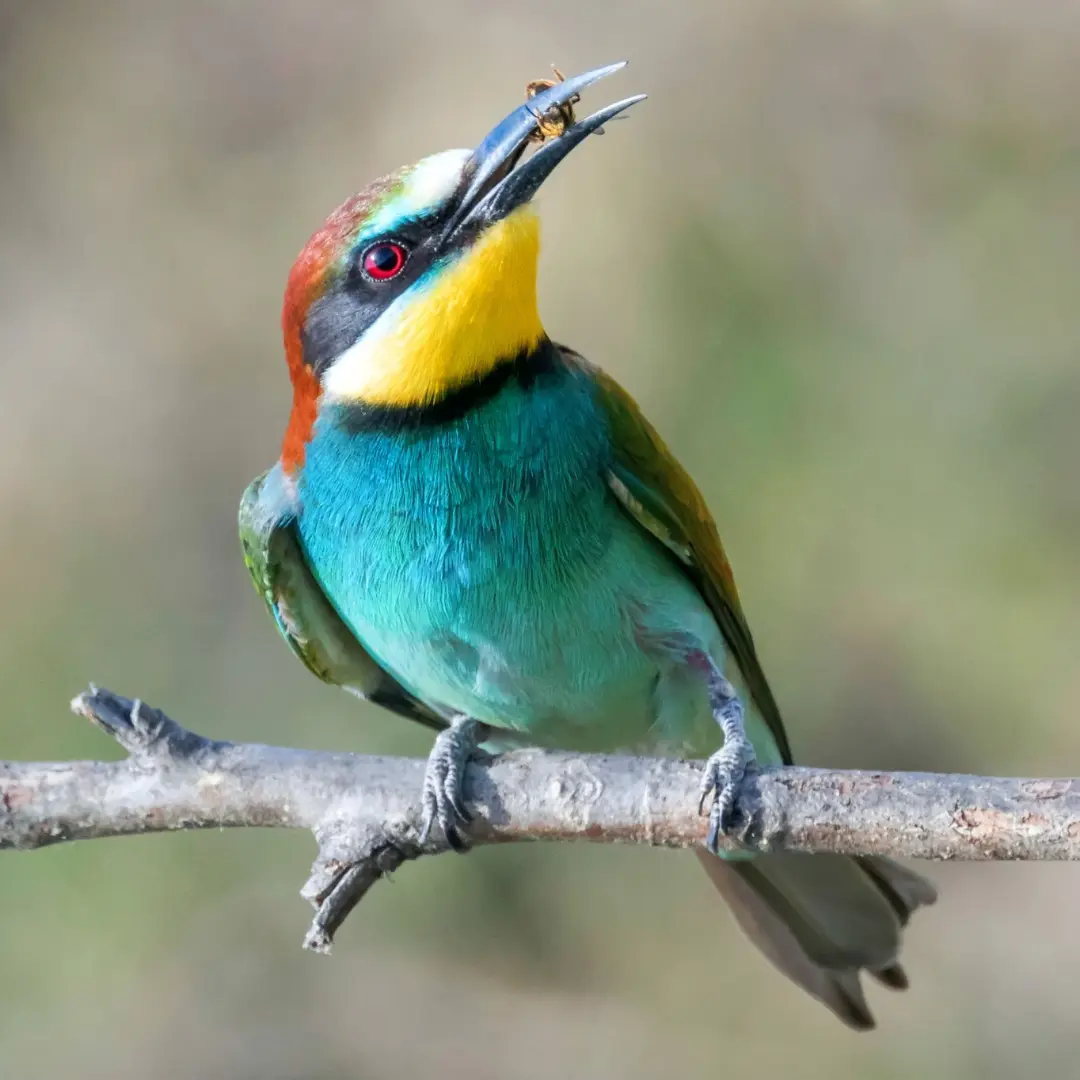
It uses its curved beak to capture prey in flight, smashing it against a rock to remove stingers. Remarkably, it can withstand up to four stings due to partial immunity to venom.
Where to find the European Bee-eater
This bird thrives in sunny, open areas such as meadows and riverbanks. It migrates to Europe in April to breed and returns to Africa in autumn.
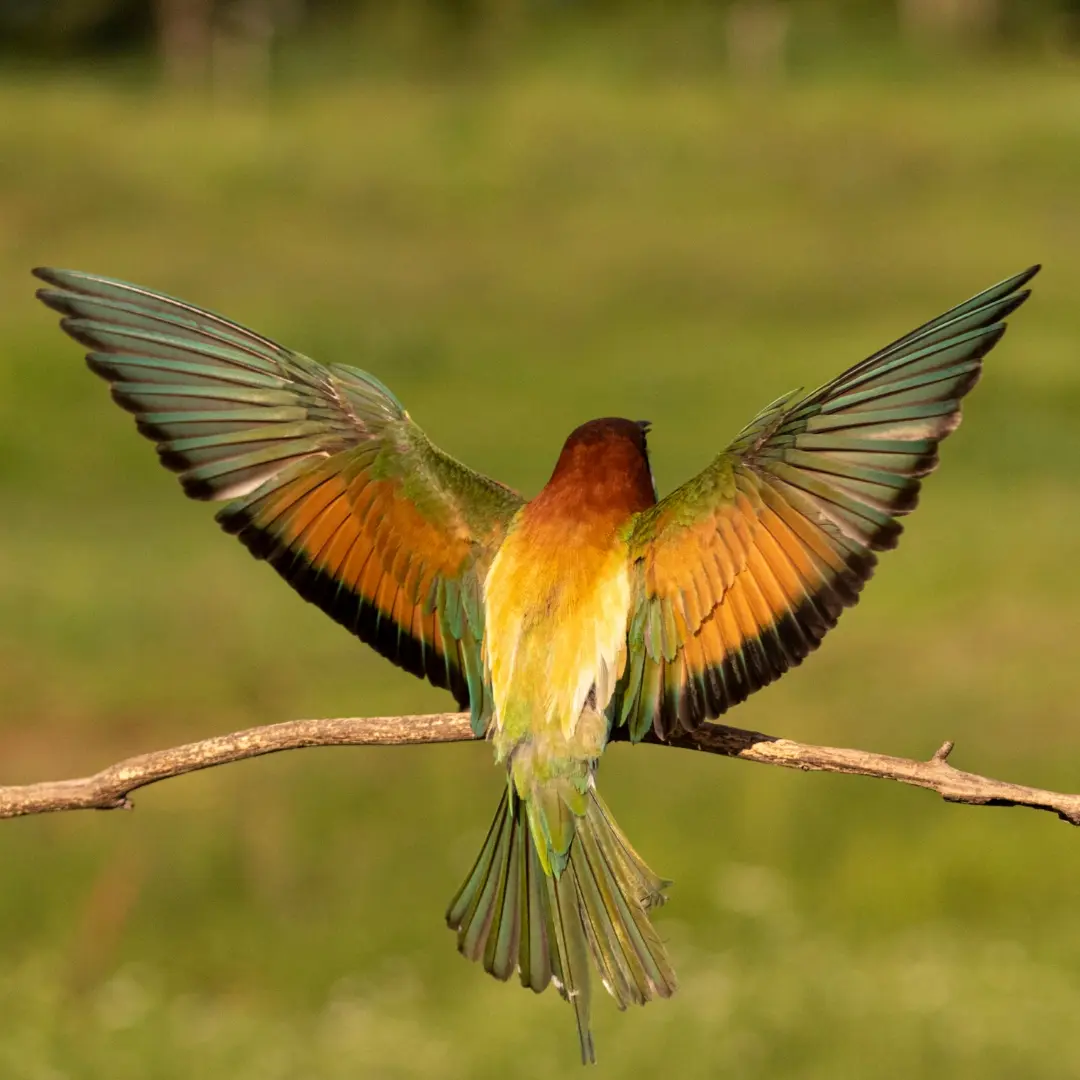
-
